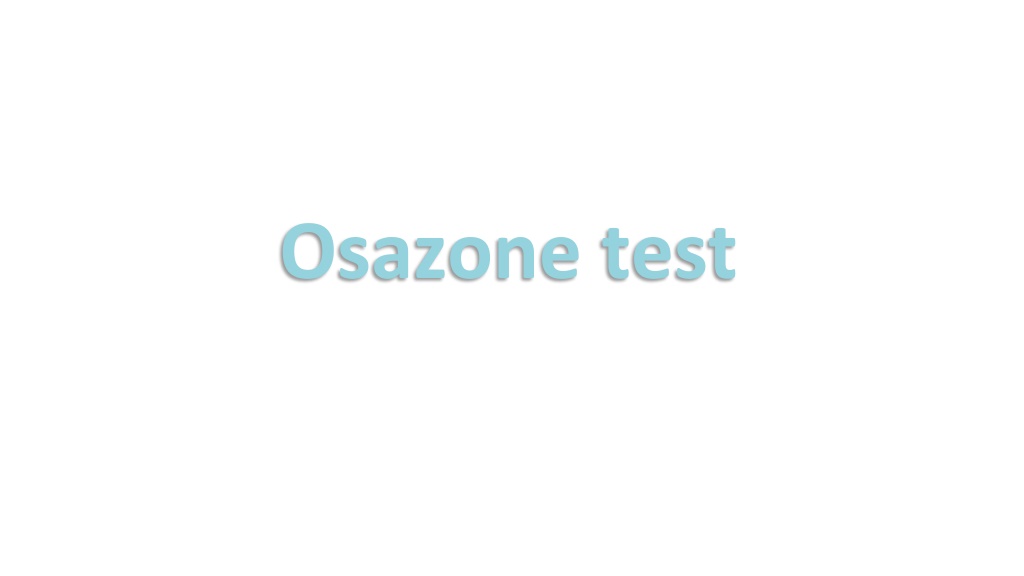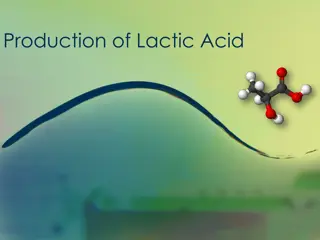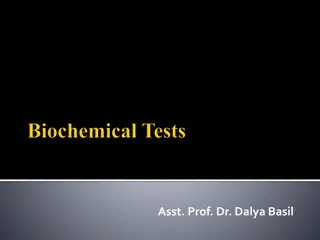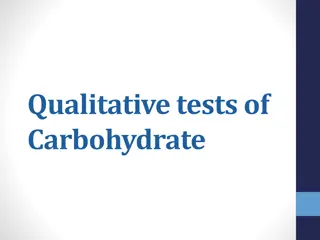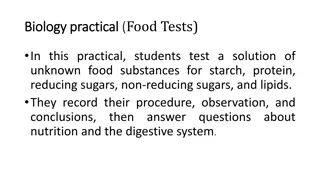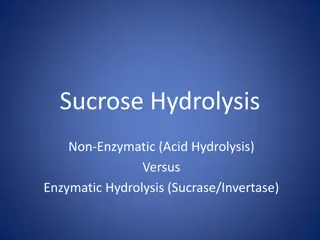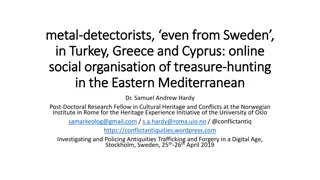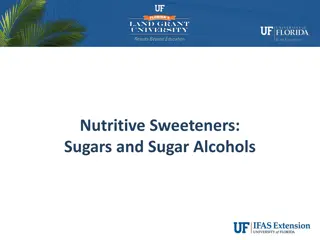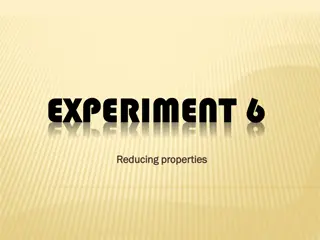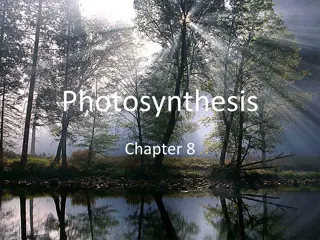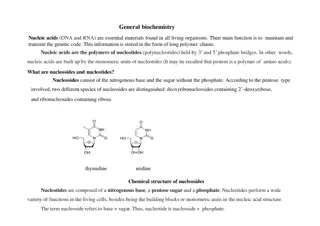Understanding Osazone Test: A Chemical Test for Detecting Reducing Sugars
The Osazone test is a chemical test used to detect reducing sugars by forming derivatives of carbohydrates with phenyl hydrazine. This test helps in distinguishing different reducing sugars and differentiating between reducing and non-reducing sugars. The principle involves the reaction between carbohydrates with free carbonyl groups and phenyl hydrazine to form osazone crystals. Glucose, fructose, and mannose form identical osazones with differences in C1 and C2 configurations.
Download Presentation

Please find below an Image/Link to download the presentation.
The content on the website is provided AS IS for your information and personal use only. It may not be sold, licensed, or shared on other websites without obtaining consent from the author. Download presentation by click this link. If you encounter any issues during the download, it is possible that the publisher has removed the file from their server.
E N D
Presentation Transcript
Osazone test :- Osazone test is a chemical test used to detect reducing sugars. Osazones are derivatives of carbohydrate formed by boiling reducing sugar (free carbonyl group) with excess of phenyl hydrazine . Although all reducing sugars form crystalline derivatives in this test that called (osazones) but we can differentiate between these different reducing sugars on the basis of the time of appearance of the complex. This test is also termed Phenyl hydrazine (C6H5NHNH2) test based on the reagent used for this test.
Objectives of Osazone Test To detect reducing sugars. To differentiate reducing sugars from non-reducing sugars To distinguish different reducing sugars between each other. 1. 2. 3. Note:- Sucrose, does not form osazone crystals because it is a non reducing sugar as it has no free carbonyl group.
Principle of Osazone Test The reagent for this test consists of phenyl hydrazine in acetate buffer. This test is based on the fact that carbohydrates with free or potentially free carbonyl groups react with phenyl hydrazine to form osazone. The condensation-oxidation-condensation reaction between three molecules of phenyl hydrazine and carbon one of aldoses and carbon two of ketoses yields 1, 2-diphenyhydrazone, which is known as osazone.
It involves two reactions. Firstly glucose with phenyl hydrazine gives glucose phenyl hydrazone by elimination of a water molecule from the functional group. The next step involves reaction of one equivalent of glucose phenyl hydrazone with two equivalents of phenyl hydrazine (excess). First phenyl hydrazine is involved in oxidizing the alpha carbon to a carbonyl group. Second phenyl hydrazine involves in removal of one water molecule with the new-formed carbonyl group and forming the similar carbon nitrogen bond. The alpha carbon is attacked here because it is more reactive than the others.
Note: Glucose, fructose & mannose form identical osazones. These sugars differ only C1 & C2. Osazone formation involves C1 & C2. The difference between these sugars at C1 & C2 are masked during osazone formation. Osazone formation destroys the configuration of C 1 or C-2 of the sugar but does not affect the configuration of the rest of the molecule.
Osazones are highly coloured and crystalline compounds and can be easily detected. Each sugar has a characteristic crystal form of osazones of characteristic shape, solubility, melting point, and time of formation. Osazone is different for different sugars. Since both carbons 1 and 2 are involved in the reaction, C-2 epimers produce the same osazone. Similarly, ketoses with a configuration identical to aldoses below C-2 give the same osazones, e.g. glucose and fructose.
Here the glucose and galactose are also epimer on C4 so the produce different osazones.
Procedure: 1.Take 5 ml of test solution in a clean, dry test tube. 2.Add 0.3 g of osazone mixture (phenyl hydrazine and sodium acetate ) and five drops of glacial acetic acid to the test tube. 3.Mix it well and warm the test tube gently in the water bath if required to dissolve all the elements. 4.Keep the test tube in boiling water and observe the formation of crystals at various time points. 5.Observe the shape of the crystal under low magnification under a microscope.
Result and Interpretation of Osazone Test Based on the shape and structure of the crystals and their time of appearance, different sugars can be identified. The following is a chart for the identification of reducing sugar:- Carbohydrate Time of formation Crystalline structure Needle shape Mannose 30 sec Needle shape Fructose 2 min Glucose 5 min Needle shape Galactose 20 min Thorny ball shape Maltose 30-45 min Sunflower/ star shape 30-45 min Lactose Cotton ball/ powder puff shape
Notes about Osazone Test Glucosazone/fructosazone and Galactosazone crystals are formed during boiling itself. Maltosazone & lactosazone crystals are formed only on cooling. Osazone of these sugars are soluble in hot solution This test is the only test that can be used to distinguish lactose from maltose during the identification of unknown sugars. This is a simple, cheap, and relatively less time-consuming test for the identification and differentiation of different sugars encountered in clinical practice. This test can also be used for locating sugars in plant tissues.
Limitations of Osazone Test This test gives a positive result for sucrose when if boiled for 30 minutes or more even though sucrose is a non-reducing sugar. This test is not effective if the sample contains a mixture of different sugars. Large quantities of sugars are required for a positive result.
Mucic Acid Test Mucic acid test is a test that is highly specific and is used for the detection of the presence of galactose and lactose. It is also termed galactaric acid that is named after the product of the reaction. Objectives of Mucic acid test To detect the presence of galactose and lactose in a given sample. To distinguish between the galactose containing saccharides and other sugars.
Principle of Mucic acid test Monosaccharides upon treating with potent oxidizing agents like nitric acid yield saccharic acids (dicarboxylic acids). Nitric acid has the capacity to oxidize both aldehyde and primary alcoholic groups present at C1 and C6 respectively of galactose to yield an insoluble precipitate (rod-shaped crystals) of mucic acid under higher temperature. Lactose also yields a mucic acid, due to the hydrolysis of the glycosidic bond between the glucose and galactose.
Reaction CH2OH-(CHOH)4-CHO + HNO3 H+ CH2OH-(CHOH)4-CHO-NO3+ Reagent Mucic acid reagent: concentrated nitric acid Test sample (1%) Distilled water
Procedure of Mucic acid test 1.Take 6 ml of each distilled water and test sugar solutions in four test tubes separately. 2.Add 1 ml of Mucic acid reagent (concentrated nitric acid) to each tube. 3.Heat the test tubes in the water bath for 1-1/2 hours until the volume of the solution is reduced to 2-3 ml. 4.Let the test tube sit overnight before collecting the results.
The formation of crystal at the bottom of the tube indicates a positive result which means that the sample solution has galactose or its derivatives. The absence of such crystals indicates a negative result and represents that the sample doesn t have galactose or its derivative. The solution might still have other carbohydrates.
Uses The most important use of the mucic acid test is to identify the presence of galactose or its derivatives in the food sample and in synthetics manufacture. This test can also be used to detect the presence of lactose. Limitations This test cannot distinguish between monosaccharides and disaccharide derivations of galactose. In some cases, a false positive result might occur due to impurities with carbonyl groups at the terminal ends.
Applications 1.Galactose is component of antigen in blood cell that determine the blood type within ABO system. 2.Diagnosis of galactosemia by determining galactose in urine and blood. H.W What s make music acid test exclusive for galactose??
